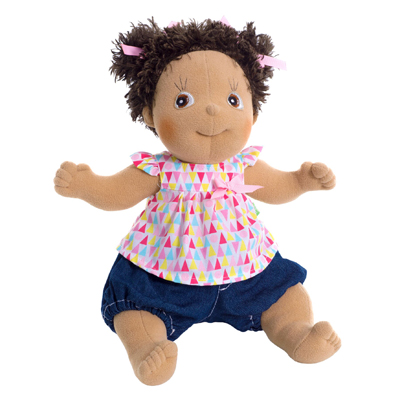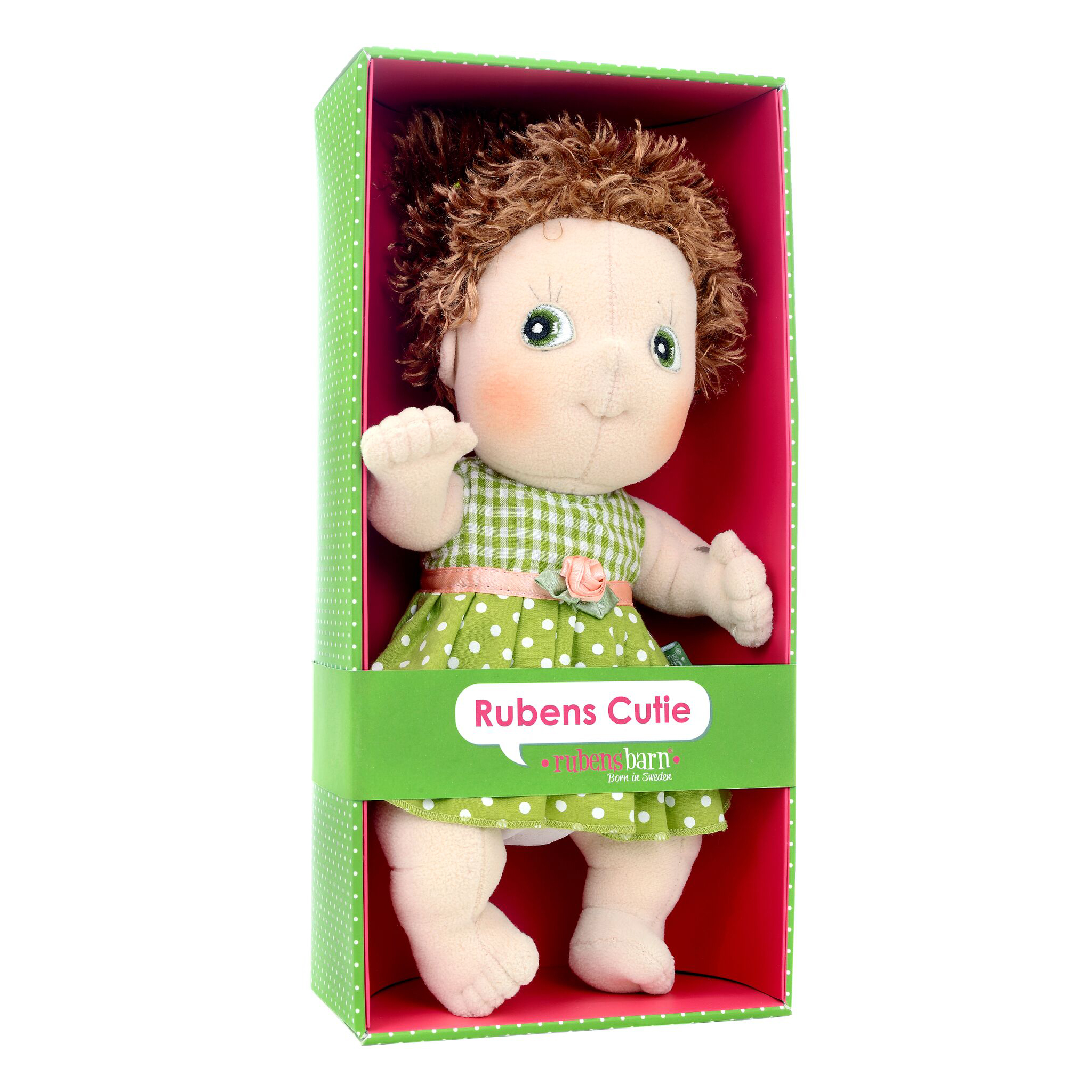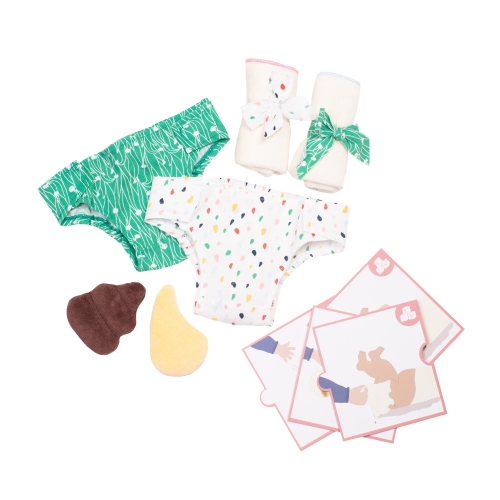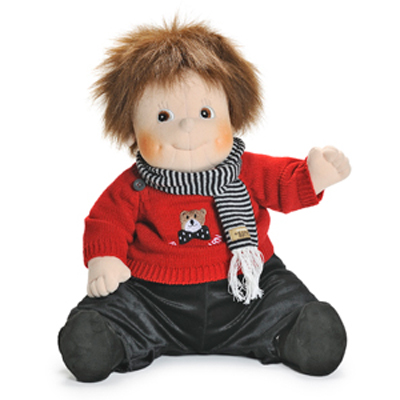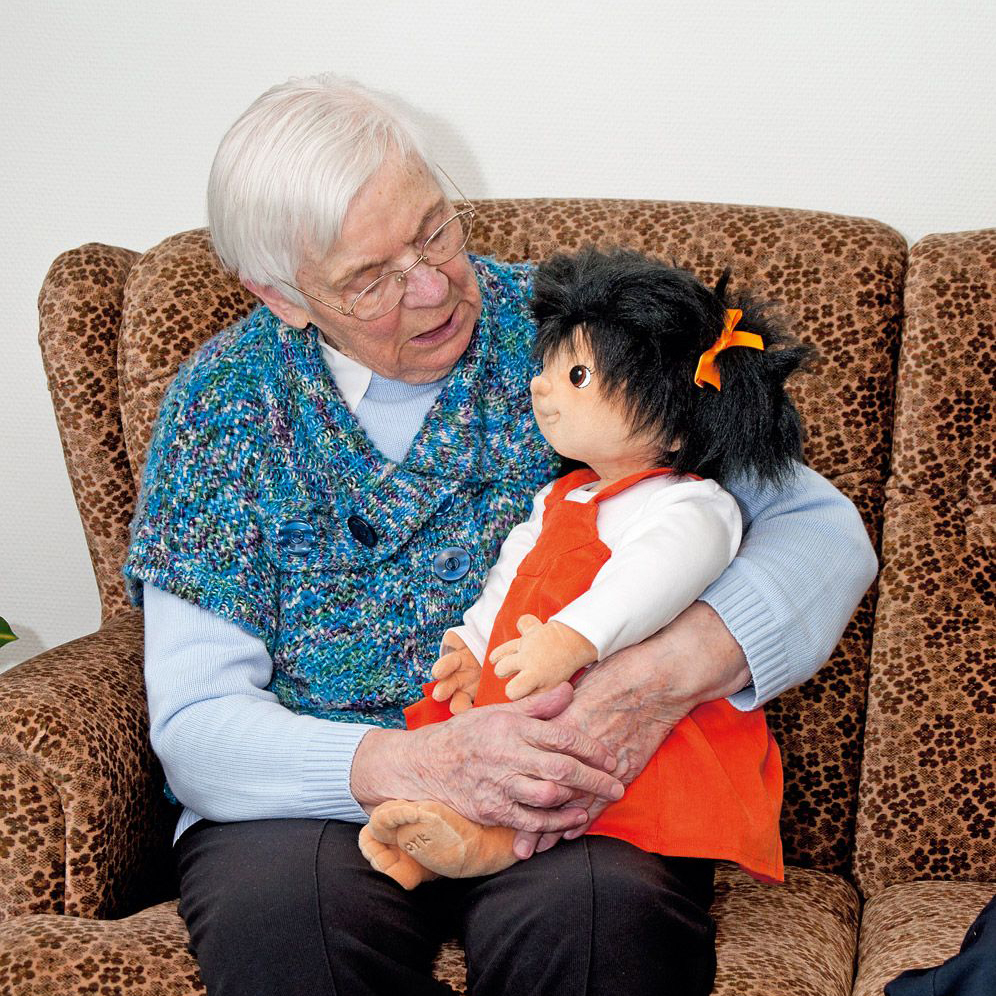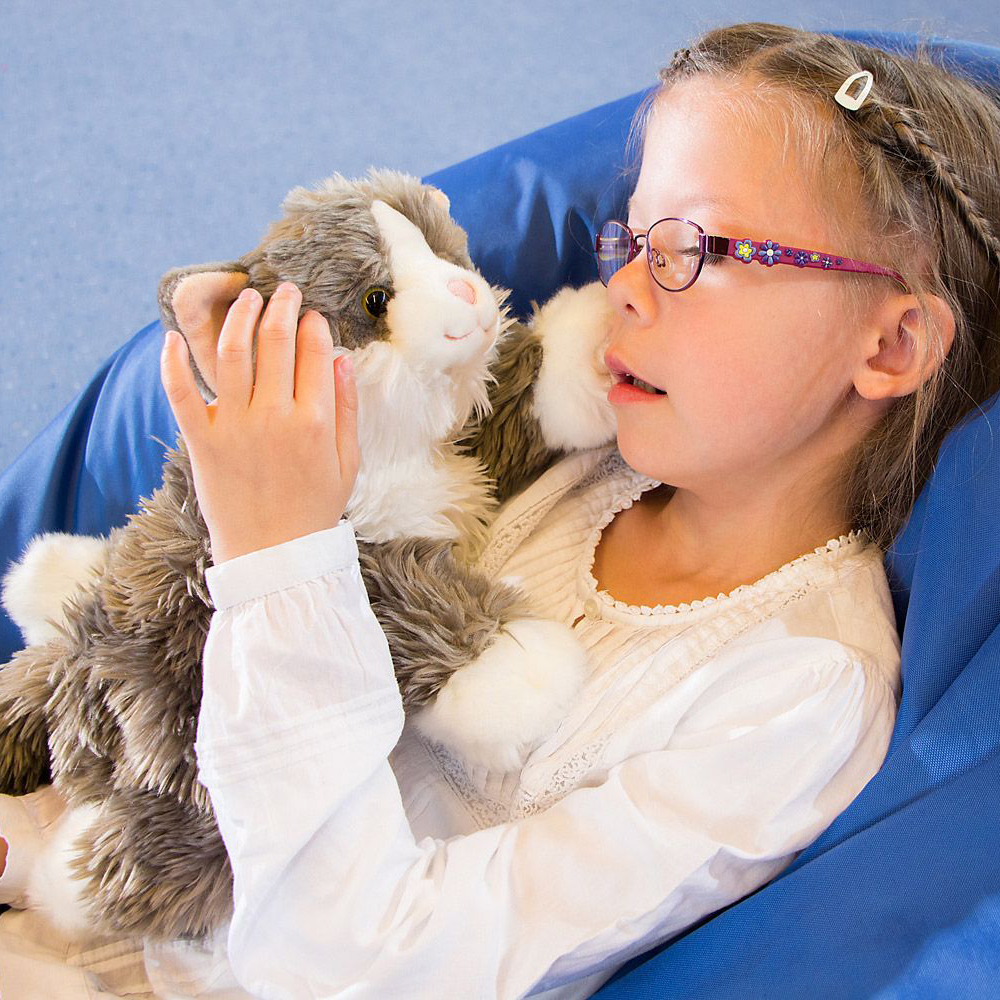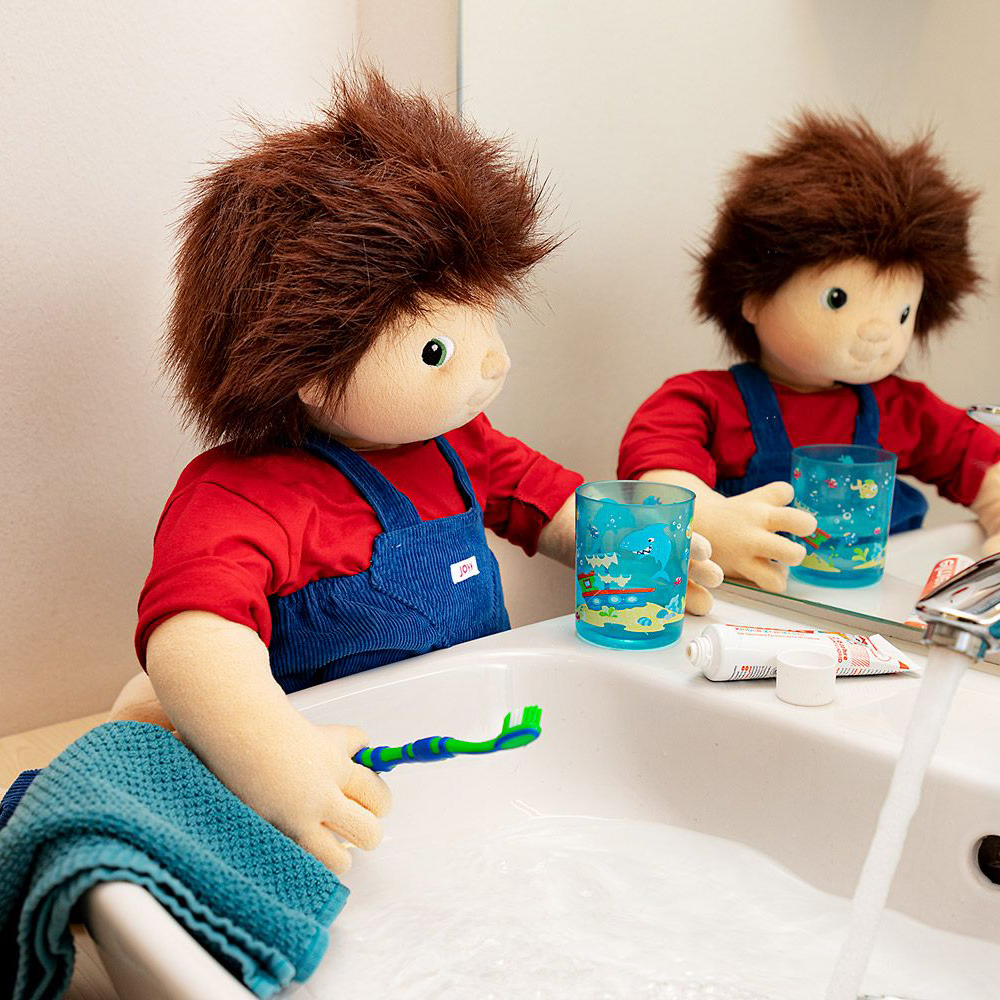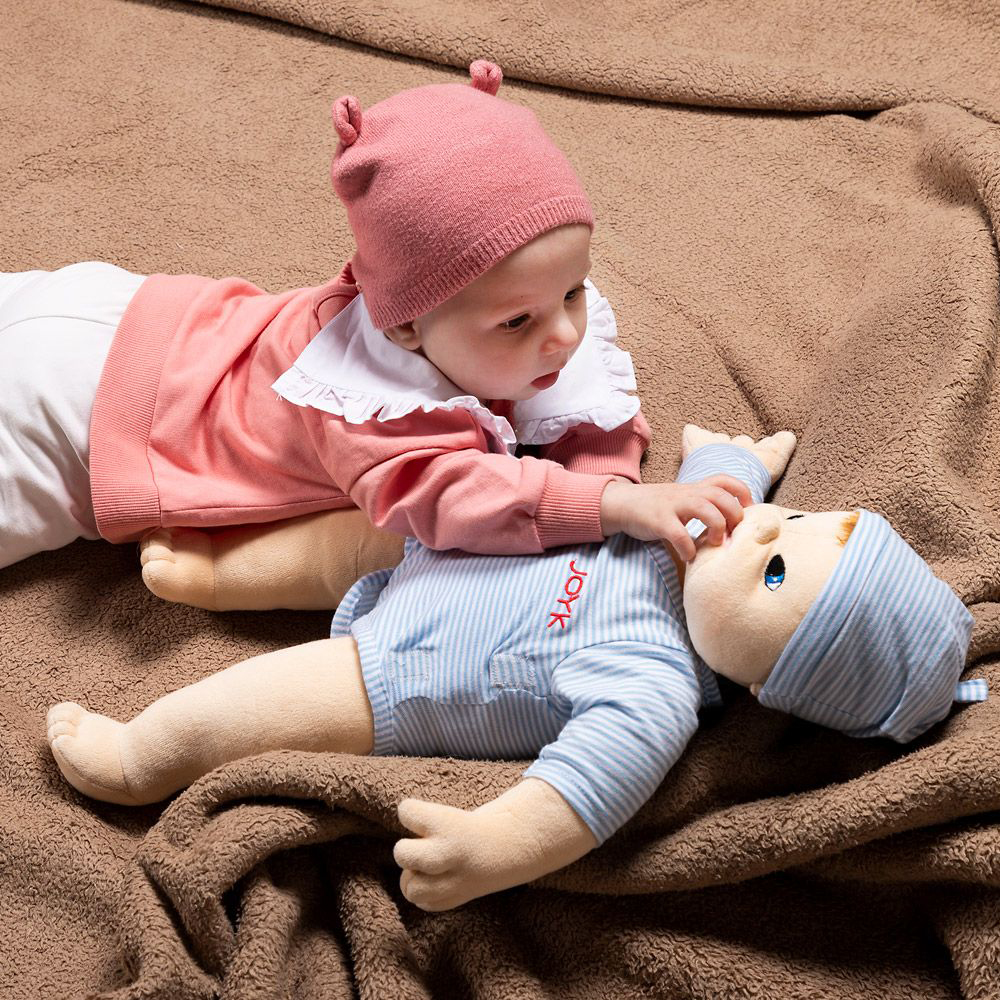Empathiepuppen als Spielpuppen und für den Einsatz in der Therapie
Rubens Barn Puppen
Mit den unvergleichlichen Rubens Barn Empathiepuppen lassen sich Gefühle, Situationen und Stimmungen, wie z.B. Inspiration, Fantasie, Eingebung, Geborgenheit, Nähe, Freude und Trauer erleben und erfahren.
Mit ihrer persönlichen Ausstrahlung erobern die Rubens Barn Puppen sofort die Herzen kleiner und größerer Puppenmamas und Puppenpapas.
Jeder Puppencharakter hat eine eigene Persönlichkeit und entsteht zu 100 % in fachlich qualifizierter Handarbeit. Jede Rubens Barn Puppe gibt ihrem Besitzer einen großen Freiraum, der immer mit den jeweiligen, spezifischen Gefühlen, Inhalten, Anforderungen und Situationen ausgefüllt werden kann.
Die Empathiepuppen eignen sie sich auch hervorragend in der Betreuung von Demenzerkrankten.
Durch ihre Ähnlichkeit zu einem echten Baby fühlen Betroffene sich in ihre Elternrolle zurückversetzt und widmen dem "Kind" Aufmerksamkeit, Zuneigung und Vertrauen – der natürliche Fürsorgeinstinkt wird geweckt. Aggressionen können dadurch abnehmen.
Joyk Puppen
Das Konzept der Empathiepuppen
Joyk-Empathiepuppen haben einen weichen Körper und einen wunderbaren persönlichen Charme. Sie wurden entwickelt, um das Einfühlungsvermögen zu fördern und zu Gesprächen anzuregen. Eine Beschwerung am Po verstärkt das Gefühl, ein echtes Baby zu halten. Werden die Puppen auf dem linken Arm getragen, entsteht der Eindruck eines direkten Blickkontakts, der für die Entwicklung emotionaler Bindungen unerlässlich ist.
Die Puppen werden schnell zu einem Teil der Gruppe oder Familie. Das Einfühlen in die Puppe ermöglicht Kindern, in einem relativ kurzen Zeitraum ein breites Spektrum an sozialen und emotionalen Themen zu erkunden.
Neben der Förderung der Fähigkeit der Kinder, die Gefühle anderer wahrzunehmen, ist auch die Schaffung eines Umfelds wichtig, in dem sie über ihre Reaktionen auf diese Gefühle in entspannter und positiver Atmosphäre sprechen und sich damit auseinandersetzen können. Im Gegensatz zu traditionellen Puppen, deren Persönlichkeit von den Kindern im Spiel bestimmt wird, betrachten sie Empathiepuppen als weitere Mitglieder der Gruppe. Die Kinder interagieren mit den Empathiepuppen, die ihre eigenen Geschichten haben und darüber erzählen können. Im Laufe der Zeit kommen dabei viele Aspekte ihrer Persönlichkeit zur Sprache, darunter Name, Alter, Familie, Vorlieben und Abneigungen, Erlebnisse und Überzeugungen.
Empathiepuppen wecken Interesse als Individuen mit eigenen Erfahrungen und eigenen Persönlichkeiten. Im Zuge ihrer Entwicklung gelingt es Kindern immer besser, sich in die Puppen einzufühlen. Dann wird es möglich, über Gefühle zu sprechen, die durch Konflikte oder neue Erfahrungen ausgelöst wurden, ohne dabei Aspekte wie Hautfarbe, individuelle Fähigkeiten oder familiäre Hintergründe zu thematisieren.
Lernpotenzial
- Förderung der Entwicklung von Dialogfähigkeiten bei Kindern
- Förderung von Gesprächen über soziale Fragen und eines entsprechenden Verständnisses
- Aufklärung von Eltern über die Bedeutung des Spielens
- Spielerische Entwicklung des Selbstvertrauens von Kindern und ihrer Sprachfähigkeiten
Gestaltung der Persönlichkeit Ihrer Puppe
Lassen Sie Ihre Kenntnisse über die von Ihnen betreuten Kinder und deren Hintergründe und Erfahrungen in die Gestaltung der Persönlichkeit Ihrer Empathiepuppe einfließen. Berücksichtigen Sie dabei die nachfolgend aufgeführten Fragen. Sie helfen Ihnen, eine Persönlichkeit zu erschaffen, in die sich viele Kinder einfühlen können. Achten Sie darauf, dass die Persönlichkeit der Puppe in ihrer Gesamtheit keine reale Person in Ihrem Umfeld widerspiegelt.
Körperliche Eigenschaften
- Überlegen Sie, welche Hautfarben in Ihrer Gruppe vertreten sind und welche nicht. Denken Sie auch an die verschiedenen Augen- und Haarfarben. Benötigen einige Kinder in Ihrer Gruppe vielleicht eine Brille oder einen Rollstuhl? Gibt es Kinder mit auffälligen körperlichen Merkmalen wie Leberflecke, Muttermale oder Sommersprossen? Kann die Puppe so angepasst werden, dass sie diese Eigenschaften teilt?Ethnischer und kultureller Hintergrund
- Welche ethnischen und kulturellen Gruppen sind in Ihrer Gruppe vertreten? Gibt es z. B. Kinder mit osteuropäischen, südeuropäischen, arabischen, afrikanischen, asiatischen oder indischen Wurzeln? Gibt es Kinder, die erst vor kurzem ins Land gekommen sind, weil ihre Familien in ihrer Heimat diskriminiert oder verfolgt wurden, und noch nicht eingebürgert sind? Sprechen die Kinder zu Hause eine andere Sprache als in der Gruppe oder haben die Kinder in der Gruppe verschiedene Muttersprachen? Welche Traditionen werden in den Familien der Kinder gepflegt? Jedes Kind hat seinen eigenen kulturellen Hintergrund.Sozioökonomischer Status
- Haben die Familien der Kinder in Ihrer Gruppe Schwierigkeiten, ihren Lebensunterhalt zu bestreiten? Oder sind sie anscheinend gut versorgt? Haben die Kinder Familienangehörige, die Sozialleistungen erhalten, arbeitslos oder wohnungslos sind oder denen der Verlust ihres Arbeitsplatzes droht? Sind in den Familien ein oder beide Elternteile berufstätig? Gibt es unter den Eltern alleinerziehende Mütter oder Väter?Familienstruktur
- Wie sehen die Familien der Kinder in Ihrer Gruppe aus? Leben die Kinder mit ihrer Mutter und ihrem Vater zusammen? Haben sie zwei Mütter oder zwei Väter? Haben sie zu einem Elternteil nur eingeschränkt Kontakt? Haben sie Geschwister? Älter oder jünger? Leben sie mit anderen Verwandten zusammen? Verbringen sie Zeit mit anderen Verwandten als Eltern und Geschwistern, gehen sie z. B. am Nachmittag zu den Großeltern? Leben die Kinder in Pflegefamilien oder wurden sie adoptiert?Vorlieben und Abneigungen
- Womit beschäftigen sich die Kinder gern in der Einrichtung oder zu Hause? Was ist ihr Lieblingsspielzeug, ihr Lieblingsessen, ihr Lieblingstier oder ihre Lieblingsfarbe? Wer ist ihr bester Freund oder ihre beste Freundin? Was tun sie nicht gern? Was essen sie nicht gern?Stärken und Schwächen
- Was können die Kinder gut? Was können sie Ihrer Meinung nach nicht gut? Hat das Einfluss darauf, was sie gern tun? Gibt es Dinge, die sie zu Hause gern tun, aber nicht in der Einrichtung und umgekehrt?Führen Sie eine Puppe schrittweise in Ihre Gruppe ein, wobei die Erwachsenen die Persönlichkeit der Puppe jedes Mal um einen weiteren Aspekt ergänzen. Nach und nach beginnen die Kinder, die Puppe als Mitglied der Gruppe zu akzeptieren. Sie fühlen sich in die Situation der Puppe ein und sind dadurch in der Lage, sich gemeinsam mit Ihnen mit komplexeren Themen auseinanderzusetzen.
Mögliche Themen:
Gemeinsame Erfahrungen - trifft für die meisten Kinder in der Gruppe zu
- Traurigkeit beim morgendlichen Verabschieden von den Eltern
- Weinen wegen verletzter Gefühle
- Weinen wegen körperlicher Verletzungen
- Freude an derselben Geschichte
- Freude, wenn andere etwas Nettes für sie tun
- Gibt es Unterschiede, die dazu führen können, dass Kinder von anderen Kindern gehänselt oder in den Mittelpunkt gestellt werden?
- Schämen sich Kinder für bestimmte Aspekte ihres persönlichen Hintergrunds oder reagieren sie empfindlich darauf? Möchten Kinder zum Beispiel keine Brille tragen, nicht mit Kindern eines anderen Geschlechts spielen, nicht ihre Muttersprache sprechen o. ä.?
- Fällt es einem Kind schwer, mit anderen zu kommunizieren?
- Wird ein Kind gemobbt?
- Verhält sich ein Kind aggressiv gegenüber anderen, weil es verärgert, müde o. ä. ist?
- Gibt es Auseinandersetzungen über Platz oder Ressourcen?
- Welche Feste und Feiertage werden in den Familien der Kinder begangen?
- Welche Traditionen pflegen sie?
- Tragen Sie eine besondere Kleidung?
- Welchen Glauben haben sie?
Wie merken wir uns die Geschichte der Empathiepuppe?
Dokumentieren Sie die Geschichte der Puppe an einem Ort, der für alle Bezugspersonen der Kinder zugänglich ist, einschließlich des Unterstützungspersonals in der Einrichtung, der Eltern, therapeutischer Fachkräfte, Vertreter/innen des Jugend- und Sozialamts usw. Je mehr Menschen Zugang zu den Daten haben, desto mehr Einsatzmöglichkeiten eröffnen sich für die Empathiepuppe und desto größer ist die Wirkung dieses Instruments.Jedes Mal, wenn Erwachsene mit den Kindern über die Geschichte der Puppe sprechen, sollten alle neuen Aspekte dokumentiert und an sämtliche Betreuungspersonen weitergegeben werden. Es ist wichtig, immer wieder verschiedene Teile der Geschichte der Puppe mit den Kindern zu wiederholen, um die individuelle Persönlichkeit der Puppe zu festigen.
Empathiepuppen als Bindeglied zwischen häuslichem Umfeld und Einrichtung
Sobald die Kinder Mitgefühl für eine Puppe entwickelt und sie als weiteres Mitglied der Gruppe akzeptiert haben, eignet sie sich perfekt für den Aufbau von Verbindungen zum häuslichen Umfeld. Die Puppen dürfen bei den Kindern zu Hause übernachten und helfen dabei, Eltern die grundlegende Bedeutung des Spielens für das Lernen zu vermitteln.
Durch eine erklärende Mitteilung und Vorschläge für zusätzliche Aktivitäten können Eltern zum fantasievollen Spiel mit ihren Kindern angeregt werden. Die Vorschläge für zusätzliche Aktivitäten liefern den Eltern einfach umsetzbare Ideen, mit denen sie die Entwicklung ihrer Kinder zu Hause unterstützen können.
Die schriftliche Mitteilung erläutert, wie die Eltern die Puppen in ihren häuslichen Alltag integrieren können, z. B. beim Waschen, beim Essen u. ä. Dies regt dazu an, die Puppe als Teil der Familie zu betrachten, und unterstreicht die Bedeutung des Spiels für die Förderung der Sprach- und Kommunikationsfähigkeiten der Kinder.
Lassen Sie die Kinder ihre Abenteuer mit der Puppe per Digitalkamera aufzeichnen, um die Verbindung zwischen dem häuslichen Umfeld und der Einrichtung noch mehr zu stärken. Empathiepuppen bieten Eltern die Möglichkeit, stärker an der frühen Entwicklung ihres Kindes teilzuhaben, und können Chancen zur Kommunikation mit der Einrichtung eröffnen, die sich sonst vielleicht nicht ergeben hätten.
Empathiepuppen bieten unendlich viele Einsatzmöglichkeiten. Sie helfen Kindern, in einem entspannten, freundlichen und verständnisvollen Umfeld aufzuwachsen, in dem sie als einzigartige Individuen geschätzt werden und ihre eigenen Geschichten und Erfahrungen einbringen können.

